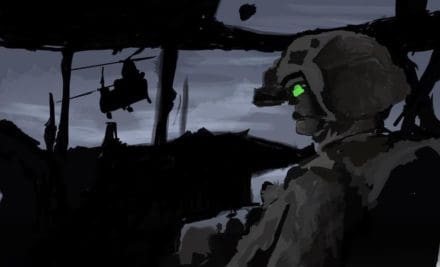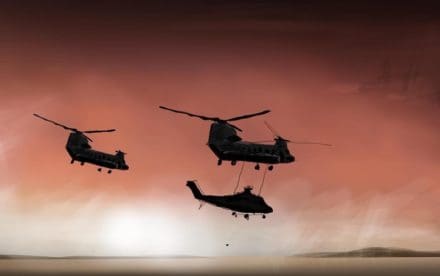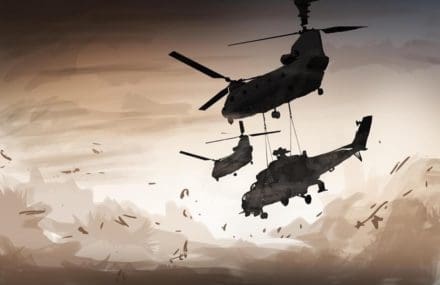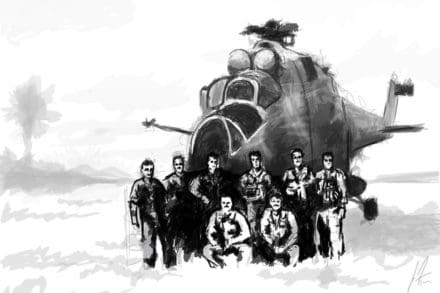June 1988, the 160th SOAG (Originally Task Force 160, the unit was later Designated a Group, the Regiment) received a short-notice directive to recover a Russian made Mi-24 Hind attack helicopter from a remote location in Chad.

At midnight on June 11, 1988, two MH-47s flew 490 miles at night without outside navigational aids to the target location, the Ouadi Doum airfield in northern Chad.

The first Chinook landed and configured the Mi-24, while the second hovered overhead and sling loaded it for return to Ndjamena.

A surprise sandstorm slowed the return trip, but less than 67 hours after the arrival of the C-5 in Chad, the ground crew had the Mi-24 and Chinooks aboard and ready for return to the U.S.

Operation Mount Hope demonstrated incredible teamwork by aviation, ground, and support personnel. Their efforts resulted in the unit’s ability to strike deep and accomplish the mission.
Night Stalkers Don’t Quit!


Dayummm, very cool! Does anyone know, is this the complete MI-24 the US has? I’d think if we already had several they’d have just blown it up in place to keep it from being used by the bad guys.
The US flys MI-24/25s all the time today, but back then this was significant for FORMAT exploitation.
Equally awesome artwork as well!
I’m wondering if this is the Mi-24 that is at the Southern Museum of Flight? When I visited that museum back in 2013, a tour guide told me that it was obtained clandestinely and not purchased, but he didn’t know much more than that. I’ve always wondered how that Mi-24 ended up in the USA….
Several good friends and my old roommate were on this operation. Pretty cool
Great story, and wonderful illustrations. SSD, where did the illustrations come from? Are they part of a larger body of work?
They came from USASOAC.
I’m not sure what is or isn’t still classified, but while the acknowledgements of those who went in with a special unnamed (at that time) unit is certainly appropriate, Operation Mount Hope III is named that way for a reason.
Greater, though most certainly more clandestine means were used for the prior versions which were much more dangerous. There is no question things were highly dangerous at the time of Op MH3, but the fluctuating battle lines had stabilized to a larger degree.
Some of you may be asking why the Hind wasn’t just flown out. Some may be asking who the first person was who actually flew a Soviet Hind. Some may be wondering if there wasn’t a manly man daring enough to fly the original team out…
Some heroes get medals and promotions. Some heroes get gold stars and speeches. But some heroes live a life where the public never knows, and the organizations in charge are silent regardless of success or failure. Those men are the heroes of heroes.
I’m not sure what is or isn’t still classified, but while the acknowledgements of those who went in with a special unnamed (at that time) unit is certainly appropriate, Operation Mount Hope III is named that way for a reason.
Greater, though most certainly more clandestine means were used for the prior versions which were much more dangerous. There is no question things were highly dangerous at the time of Op MH3, but the fluctuating battle lines had stabilized to a larger degree.
Some of you may be asking why the Hind wasn’t just flown out. Some may be asking who the first person was who actually flew a Soviet Hind. Some may be asking about its configuration. Some may be wondering if there wasn’t a manly man daring enough to fly the original team out
Some heroes get medals and promotions. Some heroes get gold stars and speeches. But some heroes live a life where the public never knows, and the organizations in charge are silent regardless of success or failure. Those men are the heroes of heroes.
NSDQ!!!